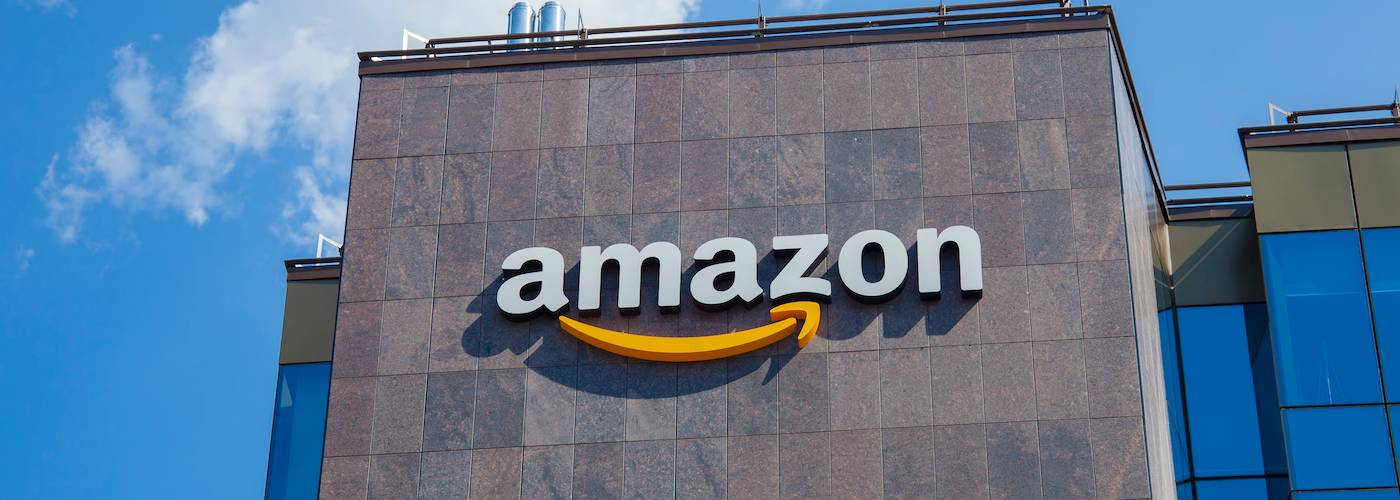Money
What Can We Learn From the Amazon vs. New York Fiasco

Amazon can teach valuable lessons to those willing to learn. Not only does the retail giant continue thriving despite Trump’s presidential campaign promise: “They’re going to have such problems,” but they also survived the recent New York Fiasco.
A Tale of Two Cities… and a Huge Tax Cut
In November 2018, it was announced Amazon selected New York City and Arlington, Virginia, as their chosen HQ2 locations.
A major part of the decision was the proposed $1.525 billion in performance-based direct incentives, including a refundable tax credit of up to $1.2 billion through New York State’s Excelsior Program.
Add to that the promise of $325 to $505 million in cash grants over the span of 10 to 15 years, plus a few other incentives, and you’ve got a roughly $3 billion deal for Amazon.
New York Gov. Andrew Cuomo referred to the deal as indicative of his goal to “build a new New York – one that is fiscally responsible.” Mayor Bill de Blasio added his support, stating it was “a great day for New York City” and “an extraordinary day for Queens [the proposed location for HQ2],” despite his personal boycott of the company.
However, the residents of Queens were not nearly as enthused at the prospect.
Congresswoman Alexandria Ocasio-Cortez tweeted, “Amazon is a billion-dollar company. The idea that it will receive hundreds of millions of dollars in tax breaks at a time when our subway is crumbling and our communities need MORE investment, not less, is extremely concerning to residents here.”
On November 26, protesters stormed the 34th Street Amazon outlet. In January this year, they repeated their earlier actions by disrupting a second hearing where the company was revealing the community initiatives planned to help boost the local economy.
The result?
“After much thought and deliberation, we’ve decided not to move forward with our plans to build a headquarters for Amazon in Long Island City, Queens,” the company announced on Valentine’s Day.
Such developments – the legacy of which is still debated several months later – offer a few lessons in venture and economic growth for everyone.
Business As Usual?
Corporate welfare, as the practice of luring companies with incentives such as tax breaks, is by no means a new idea. In fact, tax incentives were offered to a wool-weaving facility by Biella, Italy, in 1160.
More locally, the first record of something similar happening in America was in 1791, when Alexander Hamilton was offered a 10-year tax abatement by the state of New Jersey in exchange for locating his manufacturing plant in Paterson.
Even then, it was a controversial topic. Critics decried the move as “injurious to other states,” as well as “unjust and arbitrary.” And with the U.S. spending an estimated $45 to $80 billion a year on corporate welfare, it’s unlikely an uproar like that of the Queens residents will go away anytime soon.
Yet the fact remains: as long as such incentives remain legal, cities will continue to offer them. After all, it was estimated that HQ2 would generate $27.5 billion new tax revenue over the next 25 years. $14 billion would go to the state and the remaining $13.5 billion to the city.
On paper, that’s not a return-on-investment to scoff at. But in reality, inflation means the present value of the tax revenue is only $9 billion, a benefit-cost ratio of 6.3 rather than 9:1.
So the question we should be asking is: why are ineffective business location incentives still a business standard instead of the arguably more economically stimulative practice of investing in existing local businesses?
The Risk Factor
One thing said in favor of the deal is it offered a low-risk investment for taxpayers.
The 6.3 benefit-cost ratio isn’t as attractive as 9:1 (which would assume the projected $27.5 billion in tax revenue was at present rather than future value).
But the fact remains, New York State seems rather fond of offering high-risk venture capital, of which incentives are a pertinent example. What has many people scratching their heads, however, is why the proposed Amazon subsidies were considered problematic in light of this trend.
After all, a 6.3 benefit-cost ratio is actually very attractive. Add to that the fact Amazon is a mature company who weathered the storm of Trump’s campaign-era threats, and the risk factor is already greatly minimized.
But that’s not all. As Cuomo explained in a November 2018 op-ed:
“Amazon, by our current tax structure, would generate approximately $1 billion per year in new [tax] revenue. Our proposal offered that, when and if those revenues are realized, the government would effectively reduce their $1 billion payment by about $100 million for a net to New York of approximately $900 million. New York doesn’t give Amazon $100 million. Amazon gives New York $900 million.”
This poses a tricky question for discerning financial experts. On the one hand, the tax cuts would only reduce the return-on-investment by 10% of projected revenue not otherwise generated in the first place. But on the other hand, we need to ask ourselves whether AOC was correct in calling it “dressed-up trickle-down economics.”
Short answer: if we’re completely honest with ourselves, she was absolutely correct.
[wps_products_gallery product_id=”4333915537459, 4333970718771, 4344714494003″]
Desirable Employment Opportunities
Amazon was set to bring several high-paying job opportunities to HQ2 in New York and Arlington. Those originally earmarked for the Queens location will likely be passed on to Nashville, which was previously set for only 5,000 new positions.
Proponents of the deal cite trickle-down economics as a major boon for the local economy. But besides top-down economics being far less effective than the bottom-up alternative, there’s also the question of who would get those jobs in the first place.
At least two Amazon employees started buying condos in the area before the HQ2 announcement was even made, getting a head-start on the surge in real estate prices.
While hardly damning evidence, it does point to the likelihood of the company importing workers from other areas before training locals.
Adding fuel to the fire, it’s also likely the 25,000 new jobs would go the same route as Foxconn’s 13,000 jobs being slashed down to 1,000.
This begs the question of why we’re still pretending trickle-down economics work instead of focusing on a bottom-up model.
Indirect Job Loss

As mentioned, it’s likely the 25,000 to 40,000 new jobs over the proposed 15 years would end up a much lower number. But now the number is a confirmed 0 – a fact many New Yorkers are less than happy with.
Job Creators Network, a nonpartisan organization seeking to empower American small business leaders, put up a billboard in Times Square saying, “Thanks for nothing, AOC!”
It could be argued if local businesses were truly empowered, their growth and the promotion of new businesses would make up for the job opportunities lost. And bringing us back to another point raised in the previous section, not all of the 25,000+ potential positions would be filled by locals.
AOC’s chief of staff went on record saying she isn’t totally against Amazon coming back to New York if the process includes community input.
However, this ignores three blatant facts about the whole situation:
• AOC herself said “nothing Amazon has said or done… would lead us to believe it could be a good or healthy neighbor for NYC,” – a sentiment she has not withdrawn.
• As mentioned earlier, when the community was polled by Reuters, 57% responded they were in favor of HQ2 and the learning center for local development attached to the project.
• A number of small local business owners had a lot of direct input and are among those most heavily impacted by the negative implications of Amazon’s withdrawal.
Gianna Cerbone-Teoli, the founder of local Italian restaurant Manducatis Rustica, is one of those. She heavily invested in helping promote community input, staying in direct contact with Amazon executives and brokering a two-hour long Q&A session specifically for other small business owners in the area.
Another, Elijah Kliger, decided to double the space of his new animal hospital when HQ2 was first announced. Now he’s stuck with a 12-year lease contract he’s not certain he can still afford and has to cut his job creation opportunities in half.
This indirect job loss combined with Amazon’s estimated available positions totals about 107,000 opportunities lost. It’s a cautionary tale like no other.
Conclusion
While only time will tell how well New York is able to compensate for the lost opportunities, the right decision was made.
Amazon HQ2 would bring a lot of benefits at a top-tier level, but due to its reliance on trickle-down economics, the pros are heavily outweighed by the cons for those at the bottom of the pyramid.
After all, with a retail giant planned to move in, real estate swiftly rose into an unaffordable pricing tier for most locals. In fact, an open letter addressed to Amazon founder and CEO Jeff Bezos lists several legitimate concerns.
So what can we learn from the Amazon vs New York fiasco?
People are waking up to the fact trickle-down economics are damning to a city’s (and, by extension, a nation’s) financial well-being… and with the right amount of support, the people have the power to do what the president failed to: send a powerful business packing.
